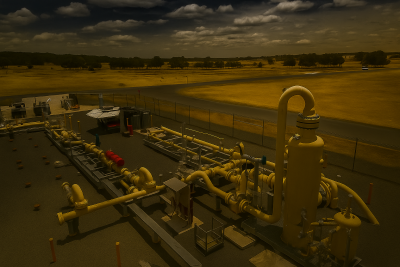Australia’s electricity grid is at the centre of one of the most significant transitions in its history. As fossil fuel plants retire and demand for electricity rises, the grid must evolve rapidly—not just to replace old infrastructure, but to support a fully electrified economy.
A Grid Under Growing Pressure
The Australian Energy Market Operator (AEMO) forecasts that electricity consumption will rise from 174 TWh in 2020 to 275 TWh by 2050, largely driven by the electrification of transport, residential heating, and industrial processes (AEMO ISP 2024, p. 24) . This shift is not just incremental—it requires a near-tripling of total generation capacity and a substantial expansion of transmission and storage infrastructure.
“We need not just replacement for coal, but additional generation to meet rising demand that hasn’t been met behind the meter.” – Tim
As coal-fired power stations retire—many by 2035—there is an urgent need to not only maintain reliability but expand the grid’s capability to handle new, distributed, and variable energy loads.
Dual Pressure Points: BTM and FTM Demand Growth
Behind-the-Meter (BTM): Hidden Loads, Unseen Stress
BTM growth stems from energy use on the consumer side of the meter. This includes:
-
Rooftop solar generation
-
Residential battery systems
-
Electric vehicle (EV) chargers
-
Electrified appliances and heating systems
These technologies bypass the traditional grid and introduce significant forecasting challenges. Since BTM energy use is not visible in real time, it complicates demand predictions, load balancing, and infrastructure planning .
Front-of-the-Meter (FTM): Large-Scale Load Shifts
Meanwhile, FTM pressure is growing due to:
-
New housing estates and subdivisions
-
Electrification of mining, transport, and manufacturing
-
Expansion of large industrial zones
FTM growth demands new substations, upgraded transmission corridors, and distributed generation closer to load centres. Without proactive investment, bottlenecks and system-wide inefficiencies will increase .
Storage as the Grid’s Safety Valve
To maintain reliability in a grid dominated by variable renewable energy, storage is critical. AEMO forecasts that grid-connected battery capacity will more than double in the next five years, providing the firming support required for renewables .
“We’re in the gigawatt-hour phase, but we need terawatt-hours of storage.” – Erik
Grid-integrated storage systems—such as BESS, pumped hydro, and emerging long-duration storage technologies—will be essential for:
-
Balancing daily fluctuations (e.g. the “duck curve” effect)
-
Preventing curtailment and wasted energy
-
Supporting dispatchability during peak evening demand
Infrastructure Readiness: Where the Grid Must Adapt
1. Transmission Expansion & Congestion Relief
Much of Australia’s renewable generation is located far from major load centres. As a result:
-
Transmission lines must be built or upgraded to connect Renewable Energy Zones (REZs)
-
Grid planners must overcome geographic mismatches and network congestion
-
Regulatory frameworks need to accelerate project approvals and unlock capital investment
“Centralised infrastructure upgrades are needed to meet rising loads in growing population zones.”
2. Distribution Network Modernisation
Distributed energy resources (DERs) like rooftop solar and batteries are changing the direction and volume of energy flows, creating the need for:
-
Bi-directional flow management
-
Smart distribution networks
-
Advanced grid-forming inverters to handle variable input
The system must be re-engineered to accommodate dynamic, two-way electricity flows, rather than static, top-down distribution models.
3. EV Charging and Urban Grid Pressure
As EV adoption increases, so does the pressure on urban distribution infrastructure, particularly in high-density environments:
-
Limited access to charging in high-rise buildings
-
Inconsistent charging network coverage
-
Need for coordinated vehicle-to-grid (V2G) integration strategies
This introduces location-specific grid constraints that require new planning, pricing, and control mechanisms.
The Grid’s New Operating Environment
Grid planning must now account for:
-
Rapid technology adoption on both sides of the meter
-
High temporal and spatial variability in load
-
Greater decentralisation of supply sources
-
Shorter asset amortisation timelines (e.g. transmission investments over 5 years vs 40+ for coal)
The result is a system under pressure—not from any one source, but from a fundamentally different operating model that demands flexibility, visibility, and intelligent coordination .
Conclusion: Future-Proofing the Grid
Australia’s energy future will be shaped by the decisions made today about its grid. AEMO’s ISP, the WA GSOO, and insights from infrastructure experts all point to the same conclusion: grid investment must go beyond replacement and actively enable new demand.
Electrification is accelerating faster than the infrastructure designed to support it. Only through coordinated upgrades in transmission, distribution, and storage—underpinned by smarter technologies—can Australia maintain reliability, meet net-zero targets, and seize the economic opportunity of the energy transition.
Key References
-
AEMO Integrated System Plan 2024: https://aemo.com.au
-
AER 2024 Electricity & Gas Networks Performance Report
-
WA Gas Statement of Opportunities (WA GSOO), 2024



